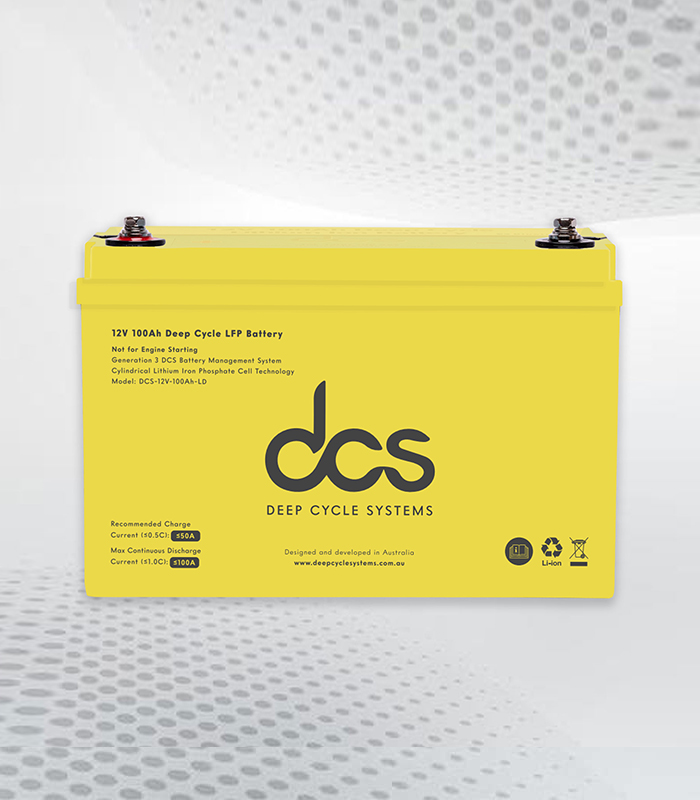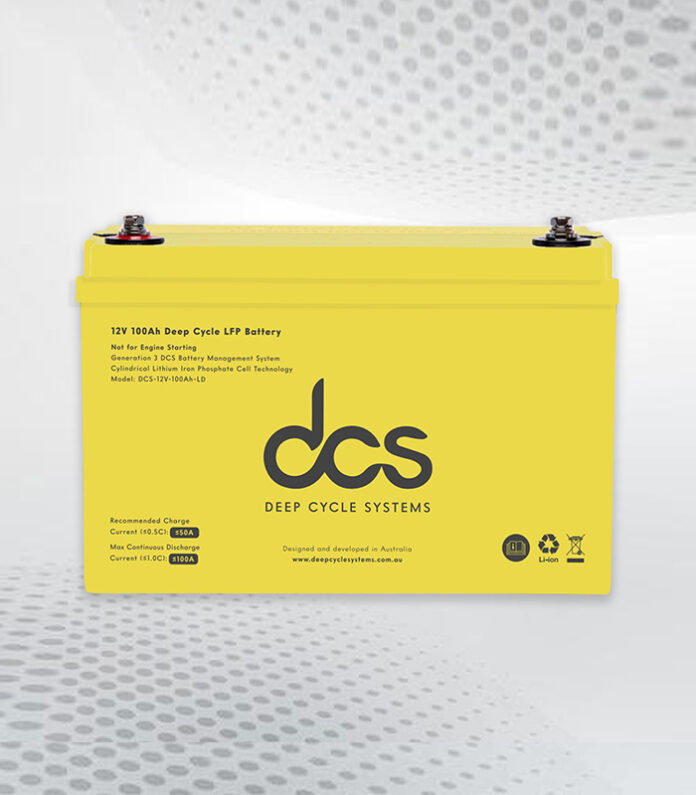When it comes to powering our devices and equipment, having a reliable and long-lasting battery is essential. One such battery that has gained popularity for its capacity and performance is the 75 Ah battery. This blog post will take a deep dive into the 75-ah battery, exploring its basics, types, advantages, common applications, maintenance tips, and ways to maximise its performance.
The Basics of a 75-ah Battery
Understanding the fundamental properties of a 75-ah battery is crucial for those looking to harness its power effectively. The designation “75-ah” signifies that the battery is capable of delivering 75 amperes of current over the course of an hour. Alternatively, this capacity can be distributed differently, such as supplying 7.5 amperes over a span of 10 hours. This flexibility in energy distribution underscores the adaptability of the 75-ah battery to various power needs.
Amp-hour (Ah) ratings are a key indicator of a battery’s energy storage capacity, offering a glimpse into the duration a battery can operate before requiring a recharge. This rating is pivotal when selecting a battery for specific applications, ensuring that the energy demands of the device or system can be met without frequent interruptions for charging.
Deep-cycle batteries, like the 75-ah variety, are engineered to provide a steady amount of current over lengthy periods. Unlike starter batteries, which discharge a large current for a short duration to start engines, deep-cycle batteries are designed for endurance. Their ability to sustain prolonged discharges makes them suitable for applications where a consistent and reliable power source is paramount.
The versatility and robust energy capacity of the 75-ah battery make it a preferred choice for powering a wide array of devices and systems. From recreational vehicles and marine crafts to solar power setups and backup energy systems, its applicability is vast, catering to a broad spectrum of power requirements.
Types of 75 Ah Batteries Available
The marketplace offers a diverse selection of 75 Ah batteries, catering to varying needs and applications. Predominantly, these batteries come in three principal types: lead-acid, lithium-ion, and gel.
Lead-acid batteries stand out for their cost-effectiveness and established reliability, having served as a cornerstone in power storage technology for decades. These batteries are particularly favoured for their robustness and are commonly employed in vehicles and stationary power storage roles.
Lithium-ion variants, in contrast, are celebrated for their lighter weight and superior energy density. This makes them exceedingly suitable for portable applications and electric vehicles, where efficiency and longevity are crucial. Their rapid charging capabilities and longer cycle life set them apart from traditional battery technologies.
Gel batteries, encapsulated in a silica-based gel, provide a maintenance-free solution, eliminating the need for regular water top-ups. Their exceptional resilience to vibration and impacts, coupled with superior leak resistance, renders them ideal for rigorous or mobile environments.
Each type of 75-ah battery offers unique advantages, allowing users to select based on specific requirements such as cost, weight, energy density, and maintenance needs. Whether for renewable energy storage, vehicle use, or mobile power, understanding these distinctions is pivotal in choosing the most appropriate 75-ah battery for any given application.
Advantages of Using a 75Ah Battery
The 75ah battery stands out for its remarkable capacity, facilitating extended durations of device operation without the necessity for frequent recharges. This attribute is particularly beneficial for scenarios where continuous power supply is paramount, such as in remote locations or for critical equipment.
The inherent durability and reliability of the 75-ah battery underscore its suitability for a myriad of applications, ranging from marine vehicles to off-grid energy systems. Furthermore, its low self-discharge rate is a critical advantage, ensuring that the battery retains its charge over prolonged periods of inactivity. This feature is invaluable in applications where the battery may not be used regularly but needs to remain ready for immediate use, such as in emergency power supplies or seasonal equipment.
Additionally, the adaptability of the 75-ah battery across various applications and its compatibility with different technologies amplify its utility, making it a versatile choice for users seeking a reliable power solution. This blend of high capacity, durability, low self-discharge rate, and adaptability positions the 75-ah battery as an optimal choice for those in need of a dependable and efficient energy storage solution.
Common Applications and Uses of Battery 75 Ah
The versatility of the battery 75 ah extends its usage across a multitude of platforms, notably within solar power installations, recreational vehicles (RVs), marine vessels, golf buggies, electric vehicles (EVs), and as a dependable backup power source.
In the realm of renewable energy, these batteries play a pivotal role in solar power systems, storing energy harvested during the day for use when sunlight is not available, thus ensuring a continuous energy supply.
Recreational vehicles and boats benefit from the substantial capacity of the 75-ah battery to power on-board appliances, lights, and navigation systems, enhancing comfort and safety during long voyages or remote camping trips. Golf carts and electric vehicles rely on the battery’s capacity to deliver consistent, reliable power over extended periods, contributing to the vehicles’ range and performance.
Additionally, the resilience and reliability of the 75-ah battery make it an ideal choice for backup power systems in critical applications, providing peace of mind that power will be available when needed most. This broad applicability underscores the battery’s importance in both everyday and specialised applications, reflecting its adaptability and reliability in meeting diverse energy requirements.
Maintenance Tips for Optimising Battery Life
Maintaining your 75-ah battery in peak condition is paramount for ensuring its long-term reliability and efficiency. To achieve this, it’s critical to conduct periodic inspections and perform routine maintenance. For those with lead-acid batteries, checking and maintaining the correct water level is essential; distilled water should be used to replenish any loss, avoiding overfilling which can lead to acid spills and damage.
Keeping the battery terminals free from corrosion and securely connected prevents power loss and potential operational issues. This can be done by regularly cleaning the terminals with a mixture of bicarbonate of soda and water, followed by a thorough rinse.
Equally important is adhering to best charging practices. Avoiding the extremes of overcharging and undercharging will significantly extend the battery’s lifespan. Overcharging can lead to excessive heat, causing internal damage, while undercharging repeatedly can lead to sulphation, where lead sulphate crystals harden on the battery’s plates, reducing its capacity and lifespan. Therefore, utilising a smart charger that automatically adjusts the charge rate can be highly beneficial.
 When the battery is not in active use, storing it in a cool, dry place can prevent the degradation of its components, especially in extreme temperatures which can accelerate self-discharge and sulphation. Optimally, a trickle charger should be used during storage periods to maintain the battery’s charge without the risk of overcharging.
When the battery is not in active use, storing it in a cool, dry place can prevent the degradation of its components, especially in extreme temperatures which can accelerate self-discharge and sulphation. Optimally, a trickle charger should be used during storage periods to maintain the battery’s charge without the risk of overcharging.
By following these maintenance guidelines, you can help ensure that your 75-ah battery remains a dependable source of power, capable of meeting your energy needs effectively for as long as possible.
Unlocking the Potential: Getting More from Your 75-Ah Battery
To enhance the utility and extend the lifespan of your 75-ah battery, thoughtful consideration towards its usage and care is paramount. Investing in a high-quality battery charger tailored to your battery’s specific needs can play a significant role in this endeavour. Such chargers adjust the charging rate to suit the battery’s state, preventing the damage associated with overcharging.
Regularly subjecting your battery to deep discharges should be avoided, as this practice can considerably reduce its operational lifespan. Opting for appliances and devices that boast high energy efficiency can also contribute to less frequent and less intensive battery use, thereby preserving its charge and condition over time.
Implementing a battery monitoring system offers a sophisticated approach to maintaining your battery’s health. These systems provide real-time data on the battery’s performance and condition, enabling timely interventions to address any issues that may arise. This proactive monitoring can be instrumental in preventing common battery problems before they lead to significant damage or degradation.
By adopting these strategies, you not only ensure that your 75-ah battery remains in peak condition but also secure its reliability as a power source for your essential devices and equipment. This approach allows you to enjoy the benefits of sustained performance without the frequent need for replacement or repair, ultimately unlocking the full potential of your 75-ah battery.
Maximising the Performance of your 75-Ah Battery
To enhance the efficacy of your 75-ah battery, meticulous attention should be paid to charging practices and environmental exposure. Consistently maintaining a full charge and preventing the battery from depleting entirely is crucial for preserving its health. Extreme temperatures, both hot and cold, can significantly impact the battery’s performance and longevity; therefore, it is advisable to store and use the battery within its recommended temperature range to avoid such adversities.
Utilising a desulfator is an effective measure to counteract the accumulation of sulphate on the plates, a common issue that can impair battery efficiency over time. This device rejuvenates the battery by dissolving the sulphate build-up, thereby enhancing its capacity and extending its usable life.
Incorporating a battery balancer into your maintenance routine ensures that each cell within the battery receives an equal charge. This is particularly important for batteries composed of multiple cells, as it prevents imbalances that can lead to underperformance or damage.
Such an approach not only promotes uniformity in charging and discharging cycles but also contributes significantly to the overall health and output of your 75-ah battery, safeguarding against premature failure and optimising its operational capacity.
FAQs
Is it feasible to install a 75 Ah battery in my vehicle?
Absolutely, utilising a 75 Ah battery in a car is possible, provided that it aligns with the car’s electrical demands and system specifications. It’s critical to verify that the chosen battery meets the requirements for your specific vehicle model to ensure seamless operation.
What is the expected lifespan of a 75 Ah battery?
The durability of a 75 Ah battery is influenced by a variety of factors, such as the manner in which it’s utilised, the level of maintenance it receives, and the conditions under which it operates. With meticulous care and under favourable conditions, a 75 Ah battery could serve effectively for a duration ranging between 3 to 5 years, and potentially even longer.
Can I link several 75 Ah batteries together to enhance power capacity?
Indeed, connecting multiple 75 Ah batteries in a parallel configuration is a feasible strategy to augment the overall energy capacity and output. It’s imperative, however, to ensure uniformity among the batteries in terms of type, age, and state of charge to mitigate potential complications during the charging and discharging processes. This approach can effectively boost power reserves for more demanding applications.
Conclusion
To wrap up, the exploration of the 75 Ah battery reveals its significant role as a robust and flexible source of power for a myriad of uses. Through delving into its characteristics, varieties, and the merits it brings to the table, it’s clear that this battery type stands as a pivotal choice for those seeking a dependable energy solution. The discussion underscored the necessity of proper maintenance and the benefits of tailored utilisation to extend the battery’s lifespan and maximise its efficiency.
This Article Was First Published On
| Other Good Articles to Read |
| Skank Blogs |
| Unreal Blogs |
| Tba Blogs |
| All City Forums |
| Dany Blogs |
| Refuge Blogs |
| The Music Blogs |
| Key Forums |
| The Big Blog Theory |
| Joe Blogs |
| Blogs 4 Me |
| Blogs Emon |
| Related Business Listings |
| Directory Submissions |
| Regional Directory |

